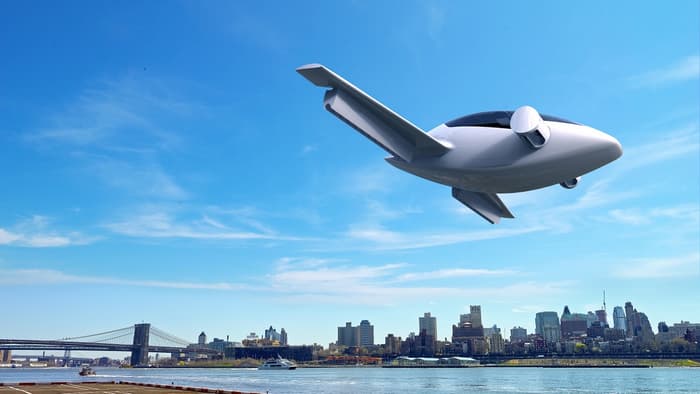Saturday, 20/04/2024 | 01:49 GMT+7
That's the vision for the Lilium Jet, an aircraft currently being developed in Germany under the auspices of the European Space Agency's business incubation center that boasts fly-by-wire joystick controls, retractable landing gear, gull-wing doors, and a claimed top speed of 400 km/h (250 mph). The creators claim that this personal e-jet could be made available to the public as early as 2018.
Combining the vertical take-off capabilities of helicopters and the cruising abilities of fixed-wing aircraft, the Lilium Jet aims to be significantly quieter than other VTOL vehicles such as helicopters, thanks to its 320 kW (435 hp) rechargeable-battery-powered ducted fan engines (arranged in a not-too-dissimilar form to that adorning Darpa's X-plane prototype).
Designed for recreational flying use during daylight hours, the Lilium Jet should be classed as a Light Sport Aircraft in Europe, with a pilot's license requiring just a minimum of 20 hours training.
"Our goal is to develop an aircraft for use in everyday life," says Daniel Wiegand, CEO and one of the company's four founders. "We are going for a plane that can take off and land vertically and does not need the complex and expensive infrastructure of an airport."
Whilst flying an aircraft with so little training may seem fraught, with redundant systems for batteries, engines, and electronics (much like other proposed VTOL electric craft, such as the Joby S2), the new craft is designed to be a good deal safer than a helicopter, and with intelligent computer-control for automatic take-off and landing, any chance for pilot error should be significantly reduced.
Initially the Lilium would be only allowed to fly from designated airfields. However the ultimate goal is for it to be able take off vertically from just about any open flat space larger than just 15x15 m (49x49 ft), such as a large garden.

Once airborne the Lilium Jet will swivel its engines into a rear-facing position to propel it along like a fixed-wing aircraft to cruise at speeds of around 300 km/h (180 mph), and to travel up to a claimed distance of 500 km (300 miles) on a single charge. Top speed is aimed at around 400 km/h (250 mph), but this will have an effect on the maximum distance traveled.
The Lilium company was founded in 2015 by a group of engineers and doctoral students from the Technical University of Munich in Germany, and is developing the aircraft using the funds supplied by a venture capital investor. To date, the company says it has flown and proven the initial concept with a number of 25 kg (55 lb) scale prototypes.
Lilium has an ambitious game plan, with its first manned experimental flight of a full-sized prototype slated for 2017. After that, the company expects to launch a fully-airworthy for flight certification by 2018, in preparation for full-scale production. There's no exact detail on a projected price, but according to Lilium it should be "far less" than similar-sized aircraft and with typically lower running costs.
Gizmag
.png?w=367&h=206&mode=crop)






.jpg?w=367&h=206&mode=crop)